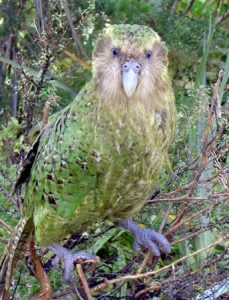I can’t rave enough about Jennifer Kahn’s recent TED talk entitled Gene Editing Can Now Change an Entire Species. The talk summarizes the new power of gene drives to eradicate malaria, dengue and yellow fever, and other dangerous diseases spread by insects. It is truly a brave new world. CRISPR (Clustered regularly interspaced short palindromic repeats) is a gene editing tool which allows scientists to edit genes precisely. In Kahn’s phrasing, it is a “word processor for genes”. Gene drives not only use CRISPR technology to edit genes but also include the mechanics of CRISPR in the DNA to enable the new gene to be passed on to offspring.
Among the intriguing uses of the new technology is to potentially rid the planet of invasive species that threaten indigenous ones. A good example is the Asian carp that has invaded our Great Lakes. Incorporate a gene drive in the Asian carp that has it producing only male offspring and within a matter of generations, the Asian carp will be gone. Of course, Kahn gives the necessary genuflections toward the need to come to agreement on the ethical issues involved, but the future applications are breathtaking.
I remember reading the superb book Rat Island by William Stolzenburg1 about the monumental attempts that have taken place, primarily since the 1970s, to eliminate invasive species, particularly on islands. Indigenous species are no match for invasive predators such as rats, feral cats, and a host of other animals that have hitched a ride with humans to these islands. You can imagine why species like the flightless kakapoo, have been decimated or pushed to extinction at the hands of predators these species have been evolutionarily unprepared for.

Kahn makes a great point. Using gene drives to eradicate species may backfire. What if modified Asian carps return to Asia (let’s not forget, they are invasive species)? The gene drive could wipe out the entire Asian carp population worldwide. But the good news is that there is a reversal gene drive which can change the modified carp back to normal should they reach their home territories. I know the new technology will have to go through a myriad of ethical panels and boards but ultimately it may have come just in time to save many species from the finality of extinction via invasive species.
The primary method of killing invasive rats has been through bait laced with Brodifacoum. The poison is an anticoagulant and eventually causes the rat’s blood vessels to “leak” and, after about a week, the animal bleeds out. Studies have shown it is probably a quite painful way to die. As one might imagine, this has caused angst among conservationist. On the one hand they want to return habitats to their pristine beauty, but on the other hand, the death of creatures, even rats, has caused somewhat of a “Sophie’s choice”. The majority of conservationists have come down on the side of eradication in the face of massive island species extinctions. David Steadman of the University of Florida estimated2 that 8,000 populations have disappeared from the islands of Oceania (about 800 islands). Turns out there was an unintended outcome of using these poisons (isn’t there always?). Some birds of prey including the bald eagle were eating the poisoned rats and dying.
Gene drives may be the silver bullet in the eradication of invasive species. Conservationists using the new technology can avoid the need to kill targeted animals. And no bykill! I know, I know, we need to test the process to make sure we avoid all the potential unintended consequences, but even if it is only partially successful, it could be huge for the environment.
I vividly remember reading E. O. Wilson’s The Diversity of Life3 as he detailed the enchanting story of the repopulation of what was left of Krakatoa volcano after it blew itself out of the water in 1883. It is clear that there is a capriciousness to repopulation. Many species find themselves carried or blown to remote islands by currents, storms, and even tsunamis. And in time, they may evolve into new species adapting to the often hostile new environments. But why are these early inhabitants given precedence over late arrivals? It appears to rest on the assumption that humans are unnatural – not part of the natural environment. And therefore, if other animals tag along with us as a human food source for long voyages, or as our pets, or even surreptitiously, they are somehow unnatural in the grander scheme of things, demanding eradication. You cannot read Rat Island and not be repulsed by the way rats prey on other creatures. I am certainly not against the eradication of these invasive species, but it is not an easy thing deciding what lives and dies.
- Stolzenburg, W. (2011) Rat Island: Predators in Paradise and the World’s Greatest Wildlife Rescue: New York, Bloomsbury ↩
- Steadman, D. W. (1995) Prehistoric extinctions of Pacific Island brids: Biodiversity meets zooarchaeology: Science, 267, p. 1123- 1131. ↩
- Wilson, E. O., (1999) The Diversity of Life: W. W. Norton & Company ↩
